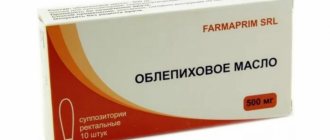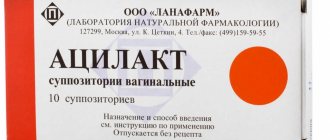Currently, there is a tendency towards an annual increase in inflammatory diseases of the female genital organs, which often have a long-term recurrent course with chronicity of the inflammatory process [1]. Infections of the lower genital tract make up 57.6% of all infectious and inflammatory diseases [2].
According to modern researchers, more than 60 phenotypes of microorganisms may be present in the vaginal microbiocenosis, but their set is relatively constant if the woman remains healthy for a significant period of time. Scientists have repeatedly tried to prove the independent etiological role of various opportunistic microorganisms in the development of vulvovaginitis. However, attempts to search for monocausative agents of inflammatory processes of the genitourinary tract caused by opportunistic microorganisms were later refuted by researchers who discovered the same microorganisms in practically healthy women. Thus, more and more data have accumulated in the literature on the polymicrobial nature of infectious and inflammatory diseases of the urogenital tract [3].
Over the past 50 years, terminology has changed several times (“hemophilic vaginitis”, “corynebacterial vaginitis”, “gardnerella vaginitis”, “bacterial vaginosis”, “aerobic vaginitis”), as a result of which, to this day, there are disputes among experts regarding the classification of bacterial vaginitis. Some authors tend to interpret bacterial vaginosis as a nonspecific inflammatory process, equating this disease with nonspecific vaginitis. Other researchers consider bacterial vaginosis to be vaginal dysbiosis - an independent nosological form. There is also no consensus among specialists regarding the etiology of this disease [4]. However, at present, most researchers consider nonspecific bacterial vaginitis as an inflammatory disease in which the ratio of strict anaerobes to aerobes changes, i.e., the anaerobic species of lactobacilli, which normally prevail, are replaced by aerobic bacteria. According to A. Fan et al. [8], aerobic vaginitis was detected in 23.7% of patients. In 58% of cases, aerobic vaginitis was combined with other infections, such as vulvovaginal candidiasis - in 30% of cases, trichomonas vaginitis - in 25% and bacterial vaginosis - in 45%.
In recent years, convincing evidence has emerged that polymicrobial pathological conditions can be associated not only with pathogenic ones ( Neisseria gonorrhoeae, Trichomonas vaginalis, Chlamydia trachomatis, M. genitalium
), but also with opportunistic (aerobic, facultative and obligate anaerobic) microorganisms.
In diseases such as urethritis, vaginitis and cervicitis, there is a clear tendency to increase the content of facultative anaerobic and aerobic microorganisms. In addition, the ratio of strict anaerobes and aerobes changes, in which representatives of the families Enterobacteriaceae
and
Micrococcaceae
.
A number of researchers include Streptococcus pyogenes, Streptococcus pneumoniae, Haemophilus influenzae, Listeria monocytogenes
[5]. These microorganisms can cause various inflammatory diseases of the urogenital tract, but their presence in the microbiocenosis may not be accompanied by clinical symptoms.
The leading link in the treatment of vulvovaginitis caused by opportunistic microorganisms is the prescription of antibacterial drugs. However, due to the extremely wide and sometimes uncontrolled use of systemic antibiotics in all areas of medicine, including gynecology, in many countries of the world in recent years there has been a tendency towards a significant increase in the resistance of representatives of aerobic microflora to some antibacterial drugs, which creates large difficulties in treating patients with inflammatory processes. In addition, the availability of medicines in the pharmacy network and the associated prevalence of self-medication is one of the costs of the modern world, which not only discredits many effective and scientifically based methods, but also reduces the possibility of correct selection of therapy due to changes in the body’s response to a particular drug and, in particular, with changes in vaginal microbiocenosis [6].
A significant place in the structure of infections of the lower genital tract is occupied by nonspecific bacterial vulvovaginitis, for the treatment of which antibacterial drugs for topical use containing metronidazole and clindamycin have become unjustifiably widespread [2]. The action of these drugs leads to the suppression of anaerobic pathogens, which can cause colonization of the vaginal mucosa with aerobic opportunistic microorganisms (Escherichia coli, enterococci, streptococci, Staphylococcus aureus). In addition, according to available data, a large number of relapses that occur at various times after the use of certain drugs of this group, in some cases persist and are even aggravated by a deficiency of indigenous lacto- and bifid flora of the vagina. Thus, at present, the issues of the etiological significance of opportunistic microflora and diagnostic criteria for nonspecific (aerobic) vulvovaginitis remain unresolved, and the lack of regulatory documents on the treatment of patients with nonspecific inflammatory processes of the urogenital tract often leads to the failure of the therapy used.
In these conditions, in the treatment of vulvovaginitis caused by aerobic and mixed microflora, preference is given to local combination drugs that have a wide spectrum of action against several types of microorganisms, without the risk of systemic effects on the body. It is also necessary to take into account that bacterial vaginitis caused by aerobic infection is characterized by a significant decrease in the quality of life of the vast majority of women - in 95.6% [7].
In the prescriptions of obstetricians and gynecologists, local drugs of complex action occupy first place in the category of antimicrobial drugs for the treatment of gynecological diseases [7]. Such drugs include Polygynax, vaginal capsules produced by pharmaceutical companies (France).
The drug contains: neomycin sulfate (35,000 IU) - a broad-spectrum aminoglycoside, active against most gram-positive and gram-negative microorganisms ( Staphylococcus aureus, Neisseria gonorrhoeae, Corynebacterium
spp
., Escherichia coli, Enterobacter
spp.
, Haemophilus influenzae, Klebsiella pneumoniae, Proteus vulgaris, Serratia
spp.
, Salmonella
spp
., Shigella
spp
., Yersinia
spp
.
), polymyxin B sulfate (35,000 IU) is a polypeptide antibiotic with a broad spectrum of action against gram-negative bacteria (
E.coli, Pseudomonas aeruginosa, Enterobacter, Haemophilus
spp
., Klebsiella pneumoniae
), nystatin (100,000 IU) is an antifungal antibiotic from the group polyenes, active against fungi of the genus
Candida
.
A.M. Savicheva, E.V. Rybin [5], assessing the effect of the drug Polygynax on microorganisms isolated from the vagina of women in an in vitro
obtained its high effectiveness against most gram-negative and gram-positive bacteria, as well as against yeast-like fungi of the genus
Candida
. All lactobacilli (19 strains) isolated from the vagina of women were resistant to the antibacterial components included in the drug [5].
We conducted a clinical study to evaluate the effectiveness of the drug Polygynax in the treatment of vulvovaginitis caused by aerobic and mixed microflora.
The purpose of the study is to evaluate the effectiveness and compliance of the use of the drug Polygynax in the treatment of vulvovaginitis caused by aerobic and mixed microflora in women of reproductive age.
Material and methods
The study included 36 women of reproductive age diagnosed with aerobic vulvovaginitis and mixed vulvovaginitis. The study was carried out in accordance with international standards and rules of GCP (Good Clinical Practice).
At the initial visit, the patient complained of heavy discharge from the genital tract, itching, and burning. During a gynecological examination and extended colposcopy, all patients had hyperemia and swelling of the mucous membrane of the vagina, cervix and vulva of varying severity.
The group was stratified at the initial stage of the study (0th visit) according to the following clinical signs: the presence and nature of discharge, itching, pain, burning, hyperemia of the mucous membranes, as well as according to laboratory results - pH-metry, real-time polymerase chain reaction (PCR) time scale - research methods, which made it possible to objectively assess the effect of the drug Polygynax on the pH of the vaginal environment and the titer of lactobacilli.
The inclusion criteria for the study were: the age of women from 18 to 45 years, the absence of specific pathogens or microorganisms with proven resistance to Polygynax: Neisseria gonorrhoeae, Tr. vaginalis, Сhlamydia anaerobia, Streptococcus agalactiae
(group B streptococci); absence of pregnancy; no indication of an allergy to antibiotics/ingredients of the drug Polygynax.
Exclusion criteria were: pregnancy or lactation, acute or chronic inflammatory (in the acute stage) pelvic diseases, concomitant STIs (with manifest manifestations), hypersensitivity or individual intolerance to the drug.
Patients meeting the inclusion criteria underwent a thorough general medical examination no later than 2-3 days before the start of treatment. The general condition of the patients and any existing deviations from the norm were assessed, which were recorded in the individual registration card.
The drug Polygynax, intended for this study, was used only in accordance with the instructions for its medical use and this protocol. Polygynax was prescribed to patients 1 capsule intravaginally in the evening before bedtime. The course of therapy lasted 12 days. During treatment and 2-3 days after its completion (2nd visit), clinical signs and symptoms of vulvovaginitis were studied to assess the effectiveness and safety of the therapy: hyperemia, swelling, pain, presence/absence of pathological discharge. Systemic anti-inflammatory and antimycotic therapy was not carried out during treatment with Polygynax.
The effectiveness of therapy was assessed by the following parameters: the dynamics of the general condition and well-being of patients, data from extended colposcopy, pH-metry, assessment of vaginal microbiocenosis by identifying the main groups of opportunistic microorganisms using quantitative real-time PCR. The Femoflor reagent set included: a mixture for PCR amplification specific for all bacteria (total bacterial mass), a mixture specific for lactobacilli ( Lactobacillus
spp.) and mixtures specific for opportunistic microorganisms.
Statistical processing of the results was carried out using the Statistica 8.0 program. Nonparametric methods were used.
results
All patients underwent a gynecological examination and clinical diagnosis of vulvovaginitis before and after treatment. According to our data, the clinical symptoms of aerobic vulvovaginitis are typical, although they do not allow us to reliably judge the suspected causative agent of the disease. 32 (88.9%) patients complained of discharge with an odor, 22 (61.1%) - itching and burning, and 30 (83.3%) - discomfort. More often there were patients with heavy discharge - 17 (47.2%), rather than with moderate - 16 (44.4%) and scanty - 3 (8.3%). The curdled nature of the discharge predominated - 22 (61.1%), mucous - 7 (19.4%) and purulent - 7 (19.4%) discharges were observed less frequently.
During dynamic monitoring, a change in the clinical picture and subjective sensations was noted (changes in the nature of leucorrhoea, reduction and disappearance of irritation, itching, burning). 24 hours after starting to take the drug, improvement in the form of disappearance of pain, itching and burning was noted by 9 (25%) patients, after 48 hours - 16 (44.4%), after 72 hours - 12 (33.3%). In other words, during the first two days after the start of treatment, most patients experienced clinical improvement. The final assessment of the effectiveness of the drug was made on the 12th day from the start of treatment. By the end of treatment, not a single patient complained of itching or burning. After therapy, the curdled discharge acquired a mucous character. Thus, only on the basis of clinical data has the effectiveness of a 12-day course of treatment been substantiated as the most optimal for the complete elimination of pathogens and reducing the frequency of relapses in aerobic and mixed vulvovaginitis.
We did not obtain any pathognomonic colposcopic signs of urogenital infections. Relatively rarely, we found hyperemia of the mucous membrane of the vagina and vulva - in 16 (44.4%) patients, the symptom of “semolina” - in 17 (47.2%), signs of endocervicitis - in 10 (27.8%); in 9 (25%) patients, areas of columnar epithelium were identified in the exocervix, which made it possible to interpret these changes as ectopia. According to control colposcopy, there was an improvement in the condition of the mucous membrane of the vagina and cervix (reduction of swelling, vascular pattern, hyperemia). Adverse reactions during therapy were not identified in any patient.
Microbiological examination data (Fig.
1)
before treatment were presented:
Candida albicans
- in 24 (66.7%) patients;
Streptococcus
spp.
— in 17 (47.2%); Enterobacterium
spp.—in 4 (11.1%);
Staphylococcus
spp.
- 3 (8.3%); Ureaplasma
spp.
— in 7 (19.4%) patients. In 14 (38.9%) patients, two or three pathogens were simultaneously detected, i.e. mixed vaginitis was noted. Under the influence of the drug Polygynax, complete elimination of aerobic and fungal microflora occurred. It is important to note that, along with the elimination of facultative anaerobic flora, the drug had no effect on the level of Lactobacillus
spp.
Before treatment, median concentrations of Lactobacillus
spp.
was 2⋅105 GE/ml* [before treatment, the relative Lg (N/MBP) in 29 patients was 57-75%, and in 7 patients - 6-8%], and facultative anaerobic microorganisms replacing lactoflora - 2⋅108 GE/ml in all examined patients. After treatment, median concentrations of Lactobacillus
spp. increased to 5.5⋅107 GE/ml in 23 patients. Relative Lg (N/MBP) was 80-95%, and facultative anaerobic microorganisms reached 0 GE/ml (p < 0.0001).
Rice.
1. Results of microbiological examination of the examined patients before and after treatment. In our studies (Fig. 2), before treatment, pH was 4.0–4.5 in 6 (16.7%) patients, pH 5.0–6.5 in 30 (83.3%), pH 7.0 or more was not determined in any patient, while after treatment the pH was 4.0-4.5 in 35 (97.2%) patients and in 1 (2.8%) patient pH >4 ,5. A significant decrease in the pH of the vaginal environment in 97.2% of patients after treatment creates optimal conditions for the growth of lactobacilli, which coincides with the opinion of E.F. Kira et al. [3] “To divide, lactobacilli need an optimal pH level (acidic 3.8-4.2)…”
Rice. 2. pH values of the vaginal environment in the examined patients before and after treatment.
Thus, the use of a combination of two broad-spectrum antibiotics and an antimycotic as part of the drug Polygynax allows for polyvalent treatment without the negative impact of antibiotics on the normal vaginal microflora.
Antibacterial suppositories Polygynax - reviews
Victoria1992
https://otzovik.com/review_6039217.html
Advantages:
It copes well with thrush and prepares the microflora before causing erosion. There is no burning sensation when using these vaginal suppositories.
Flaws:
Expensive
Good afternoon my dear friends. Today I decided to write about wonderful suppositories that many have probably heard about or were treated with POLYDINAX from the manufacturer Innotek. In general, before cauterizing cervical erosion, I will be completely examined. I especially recommend getting tested for (thrombosed index and ratio) - this is for clotting. The main ones are PCR smears, which show the presence of diseases and leukocytes. I think the main thing is to prepare for the tests. I remember I got sick with cystitis and started taking amoxicillin, and a week later I came to see my gynecologist. I forgot that I was taking an antibiotic and the doctor took a test for leukocytes. Naturally, the leukocytes were more than 39. THAT’S THEN THE DOCTOR PRESCRIBED ME WITH POLYGYNAX SUPPLERS. I inserted for 7 days and took a PCR test, the result was 1. This means that suppositories relieve inflammation very well and thereby cope with thrush and leukocytes. Therefore, I confidently recommend these candles. There was no discomfort from these vaginal suppositories. Manufacturer of vaginal suppositories POLYGINAX INNOTECH: Innotera Shuzi. France. Places of production dosage form: Beinheim, France. Kirchberg, Switzerland. In general, I advise you to still consult with a good doctor before purchasing.
Tatiana
https://lekotzyvy.com/preparat/p/polizhinaks/
Advantages: effective drug
Disadvantages: none found
From time to time I have relapses of thrush, sometimes out of the blue. At the first signs of the disease, I immediately took flucostat once, then again to consolidate the result. But this time I was pregnant, and flucostat is prohibited during pregnancy. I tried treatment with clotrimazole. It brought temporary relief, then everything returned. When I went to the gynecologist again, she prescribed Polygynax for me. The instructions for the drug contain restrictions for use during pregnancy, but since I was already 6 months pregnant, the doctor said it was possible. I used candles at night, 1 candle for 12 days. Already on the second day, the symptoms began to subside: the itching began to stop, the discharge became less. After 12 days I forgot about the thrush, and subsequently it did not return. Among the minuses, I would like to note the large size of the candles, the leakage of the contents of the candles when walking, which stains the laundry. I recommend using gaskets when using candles. In general, Polygynax coped with its task, and I was satisfied with taking the drug.
Karina
https://lekotzyvy.com/preparat/p/polizhinaks/
I bought Polygynax for myself when I noticed unusual discharge and itching in my intimate area. As I understand, these candles are universal and with their help you can easily get rid of any pain in an intimate place. The candles turned out to be huge, but there were no difficulties in using them. I installed them overnight and discovered a surprise in the morning. When I got up, the candle, which had completely melted overnight, spilled onto my laundry. Then I tried using a gasket, but that didn’t help much either. Since the candle turned out to be greasy and the gasket could not absorb it. But still, the suppositories coped with the infection with a bang. If there were difficulties with use, then Polygynax received 5+ from me.
Oksana
https://lekotzyvy.com/preparat/p/polizhinaks/
Benefits: helped get rid of thrush
Disadvantages: large capsules, oily discharge
Was appointed a gynecologist due to frequent attacks of thrush. This is a universal remedy that contains a broad-spectrum antibiotic and an antifungal agent. A very good drug for thrush, vaginitis and various types of inflammatory processes in gynecology. It is recommended to place these candles at night before going to bed in a supine position for 12 days. During this period you should abstain from sexual intercourse. During menstruation, treatment should not be interrupted; the drug is indicated for such cases. The only drawback is that due to the large size of the capsule and its contents, there may be oily discharge in the morning, so it is advisable to use a panty liner. To avoid dysbacteriosis, I recommend taking Fluconazole in parallel. The drug helped me get rid of thrush, but while taking it, you cannot interrupt the course of treatment, otherwise the thrush may return. And after the course of treatment, rehabilitation therapy should be carried out.
Pyryalova Yu. A.
https://protabletky.ru/polygynax/
The drug is very effective. Conveniently, one drug has both antifungal and antibacterial effects. Wide spectrum of action. Allowed from the 2nd trimester of pregnancy, it is the most effective of the approved drugs. Convenient to use. Value for money. There are practically no downsides, the only course is 12 days.
Itskova E. I.
https://protabletky.ru/polygynax/
Has a powerful antibacterial and antifungal effect. Can be used during pregnancy, starting from the 2nd trimester. I widely use it prophylactically before manipulations on the cervix. The drug is well tolerated and has minimal side effects.
Polygynax is a modern drug for the local treatment of vaginitis. I have been using it in my practice for many years and recommend it to everyone.
Gudkova K. Yu.
https://protabletky.ru/polygynax/
I definitely recommend it for the treatment of vaginitis of various etiologies, as it has a powerful antibacterial and antifungal effect. There were no side effects noted during treatment with Polygynax. Good value for money.
I prescribe this drug in my practice before surgical interventions.
Maria Yakovleva
https://flap.rf/Medicine/Polygynax/Reviews/6763071
Polygynax are vaginal capsules. The drug is a combination drug, and at one time they liked to prescribe it. And they prescribed it to me for colpitis. I used Polygynax for 12 days, as expected. It’s already passed before, but I finished the course because I had to))) Well, and again, where should I put the leftover medicine? The Polygynax capsule is inserted into the vagina at night. It is convenient to sleep in shorts with a daily plan. The medicine is effective and convenient. But some women people do not listen to what gynecologists tell them and do not read the instructions. Mom told me how one of her patients complained how disgusting it was to swallow Polygynax. Therefore, I repeat - before you start using Polygynax, read the instructions! Everything is written there.
Liana Ufa
https://flap.rf/Medicine/Polygynax/Reviews/6763880
Polygynax is always prescribed, if anything goes wrong, it’s written right away on the card, for pregnant women, not pregnant women, sick people, not sick people (for prevention)
Naturally, they are prescribed only to women, especially after childbirth, favorite suppositories - with different herbs and not, and Polygynax (as I understand it, just in case, for the same prevention).
Some individuals constantly have erosion and they know for sure - they will come to the gynecology and they will immediately be slapped with either Polygynax, unfortunate, dry dull tablets, or they will be given cauterization.
Polygynax is a huge dry tablet
, sorry for the details, if you use it you will understand what I mean. There are already more advanced decent slippery candles that are much better.
just need to make a correct diagnosis
, and not miss lectures on gynecology in honey. shows tongue
Elmira Gafiyatullina
https://flap.rf/Medicine/Polygynax/Reviews/6767106
In my opinion, all women know these pills for the female body. All gynecologists love to prescribe them, but not so much for pregnant women.
For some reason they prescribed it to me in the first trimester of my second pregnancy. Of course, I was tense, but I bought it, although I didn’t use it, since another gynecologist told me that the microflora in pregnant women is not always ideal, and it’s not worth treating it, especially in first trimester, so be careful, read the instructions.



